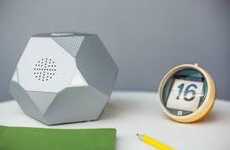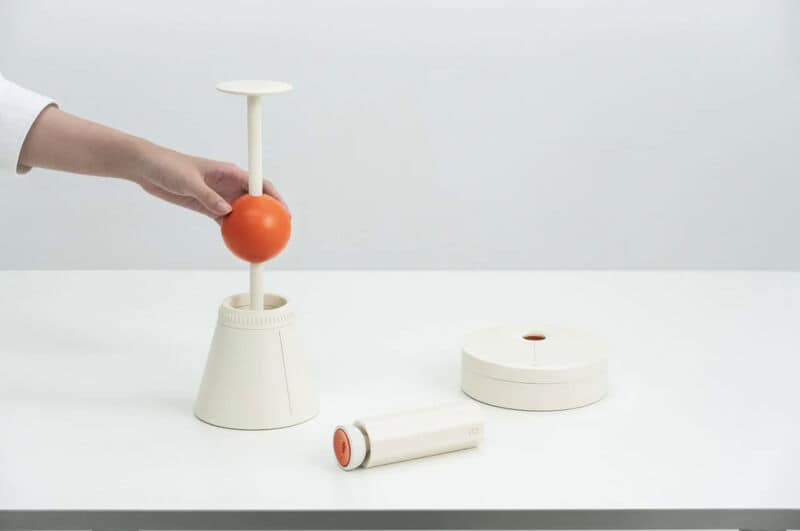
The Beyond Sight Line Caters to People with Visual Impairments
Kalin Ned — March 14, 2023 — Art & Design
References: behance.net & yankodesign
Designers Jaehee Lee, Byeonguk Ahn, and Minseok Kim answer the needs of people with visual impairments through this accessible home device range that redefines the interplay between aesthetics and function for the end user.
Beyond Sight includes three products—a speaker, remote controller, and timer. The speaker is equipped with operating buttons that "make it easier for blind people to operate them." This addresses the issue that on conventional speakers, the buttons for volume, track skipping, Bluetooth pairing, and so on are all the same shape. The remote controller also includes accessibly shaped buttons and a microphone for voice-controlling capabilities. Finally, the timer "provides configurable time presets in Braille."
The accessible home devices that are part of Beyond Sight express a need that more designers need to take into consideration.
Image Credit: Jaehee Lee, Byeonguk Ahn, and Minseok Kim
Beyond Sight includes three products—a speaker, remote controller, and timer. The speaker is equipped with operating buttons that "make it easier for blind people to operate them." This addresses the issue that on conventional speakers, the buttons for volume, track skipping, Bluetooth pairing, and so on are all the same shape. The remote controller also includes accessibly shaped buttons and a microphone for voice-controlling capabilities. Finally, the timer "provides configurable time presets in Braille."
The accessible home devices that are part of Beyond Sight express a need that more designers need to take into consideration.
Image Credit: Jaehee Lee, Byeonguk Ahn, and Minseok Kim
Trend Themes
1. Accessible Home Devices - Designing smart home devices that cater to the visually impaired through the use of alternative control options and braille features.
2. Inclusive Design - Developing more products with universal design principles to cater to all kinds of users with different accessibility needs.
3. Smart Assistive Technology - Incorporating advanced technologies and machine learning to create intelligent home devices that can cater to multiple user scenarios and assist with daily tasks.
Industry Implications
1. Smart Home Industry - Developing more accessible smart home devices with alternative controls, voice recognition, and visual feedback features for the visually impaired market.
2. Healthcare Industry - Creating assistive technologies and devices for daily living that cater to the needs of individuals with visual, auditory, and motor impairments to improve their quality of life.
3. Consumer Electronics Industry - Incorporating inclusive design principles in the development of electronic devices and appliances to cater to diverse customer needs and preferences.
7.5
Score
Popularity
Activity
Freshness
























